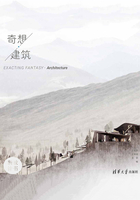
大屿山生态公社
Lantau Ecological Commune
作者:邹乐勤
时间:2016年 春
地点:中国香港
对于生态保育、小区营造之类的课题,我们普遍有理性认知,而缺乏感性回顾。漫山遍野的草丛,悄然无声而生机盎然,或有三两村屋隐没其中。郊游从来都是一种退隐:看见原始、破落、荒芜,我们一方面学会放开怀抱,另一方面也暗自庆幸自己所拥有的。不得不承认我们渴求的,并不是完全回归自然或者揭示真相,而是稍稍置身事外,透过观赏荒芜来获取美感。就正如我们都喜欢跑到贫穷老旧的城区,游走于那种邻里分享而成的复杂多变空间,去看别人活着的痕迹,感受生命的张力。我们会选择节俭,但不会愿意长居于贫民窟,如果可以选择的话。
我们都希望投身小区设计:那种无分贫富贵贱,众人都可以坐下来的空间,去找一份宁谧。然而做小区设计,会发现普罗大众需要的更多是实用品。对于他们来说,标准化住房、简单耐用的家具,往往比我们心目中想象的“设计”更合心意。于是我们问自己,如何心安理得地去实践建筑,而又找到发挥和表现的机会?
香港以高密度建筑著称。然而甚少外人知道,因为位处丘陵地带,适合开发的土地其实不多。余下的山地和集水区,因为长年受保护,形成了风光俊秀的绿化带,其中的生物多样性,是许多亚洲大都市皆望尘莫及的。大东山芒草原附近正是如此。我们造一个小小的公社,透过分享,透过付出,透过气来气喘地爬上山顶看日出日落,我们来感受大地。
我们希望公社不只是一个游客中心或者旅舍,更是一个参与的过程。就像在原始聚落里,倘若要建房子,就得动员整整一村子的人来帮忙。房子建好后,这户人家要宴请村民吃饭,而这顿饭往往要花上好几个月的时间准备。建造本来就是个凝聚小区的重要祭礼。过程当中,建筑物并不以一个实体对象出现,而是一直随着时间推移而变化。这是我们乐见的,就像大自然本来就有生住异灭一样。
回看自己当年的毕业作品,自然发现这天真烂漫透顶,而且也不见得比其他小区设计概念更可以糊口。建筑语言是个笑料:人在国外,老师不知怎的觉得东南亚气候就该用茅草、竹棚、夯土、织藤,他认为这才是可持续建筑。那时候因为快要期末交图了就不敢纠缠,老师说茅草夯土那就茅草夯土吧,结果就无辜变成低技派。我想,如果用一些现代点的材料,可能是轻钢结构、帆布、半透光板……不用昂贵,有点随意,稀松平常,或许更能衬托原始生态环境的风光?
画作方面,本来是用伦敦近来流行的历史拼贴和绘画风,我的主题是生态、日常、社会纪实,所以参考也离不开米勒和科罗。后来老师说画风太怀旧了不如简简单单画线图,把筑造的过程描绘出来,就有了最后那张轴测图。这张图后来拿了皇家艺术院Hugh Casson绘画奖,那是始料不及的。因为深知单论画功而言,比我画得好的同窗好友师兄弟姊妹们,实在太多了。
旅社

香港:地理、土地用途及分布

土地供应状况:现存乡邻保育及社区介入组织分布

农作物季节

Proposed growing cycle of some edible vegetation suitable for the land and climate of Hong Kong, divided into December planting, March planting and July planting. These are the vegetables still being grown in some of the remote farmlands.

Agricultural memory of Hong Kong: some of the species once very common across Hong Kong farmlands. Due to various social and economic factors, they are not so available nowadays, and thus becoming a memory among Hongkongers.
建筑语言



Directional Labyrinth

Gravity: the Unflat Ground

Three levels of Knowledge

Opposition: Contrasts in Material, Form and Light

rugality: Labour and Participation

Observe and Interact

Catch and Store Energy

Obtain a Yield

Use and value Renewable Resources and Services

Produce No Waste

Design from Patterns to Details

Integrate rather than Segregate

Use Small and Slow Solutions

Use Edges and Value the Marginal
采用简朴而可再生的建筑材料:夯土、竹棚和树枝

Material Thriftiness:
Rammed Earth, Bamboo Scaffolding, Twigs and Thatching
(Above) Components in Axonometrics
How to design a building that does not focus on its material presence—against materialism? How to design the emptiness of a building—of its space, movement and journey? A classical paradox: is it the negative space of a bowl that makes the bowl functioning as a bowl, or is it the material presence of the bowl itself making it a bowl? If a piece of architecture is to be designed as thrifty as possible, what material should it adopt?
Rammed earth: building from landscape. Bamboo: a local material known for fast growth rate and sustainability, commonly used as construction scaffolding. Twigs: to be collected around the forest. Thatching: thick and primitive.
阅览室初稿:平面、立面和剖面

横剖面(日间)

基地地图

各建筑部分平剖面

平面图


Entrance
1. Handcraft Store
2. Viewing Platform
3. Visitor Centre
Hostel
4. Hostel Corridor
5. Living Room
6. Bedroom
7. Balcony
8. Kitchenette
9. Bathroom
10. Courtyard
11. Staircase
Cultural Cluster
12. Bridge
13. Green Kitchen and Restaurant
14. Cold Room
15. Main Gathering Hall
16. Courtyard
17. Storage
18. Workshop
19. Entrance to Library
20. Courtyard
21. Library
22. Viewing Platform
23. Accessible Toliet
24. Workshop Storage
25. Male Lavatory and Changing Room
26. Female Lavatory and Changing Room
27. Swimming Pool
28. ELV Room
29. ELE Room
30. Staircase
31. Accessible Platform
Commune Dwelling Units
32. Bridge
33. Commune Living Room
34. Bedroom
35. Balcony
36. Kitchenette
37. Bathroom
38. Courtyard
39. Corridor
Commune Facilities
40. Covered Corridor
41. RIce Fields
42. Open Gathering Square
43. Exhibition Room
44. Courtyard
45. Classroom
46. ELV Room
47. ELE Room
48. Courtyard
49. Meeting Room
50. Main Storage
51. Cafe
52. Kitchen
53. Bicycle Shelter
54. Open Farm Market
沿山路经过公社入口


工作室及画廊

河边
图书馆

纵剖面(晚间)

一头牛的离去

营造过程
